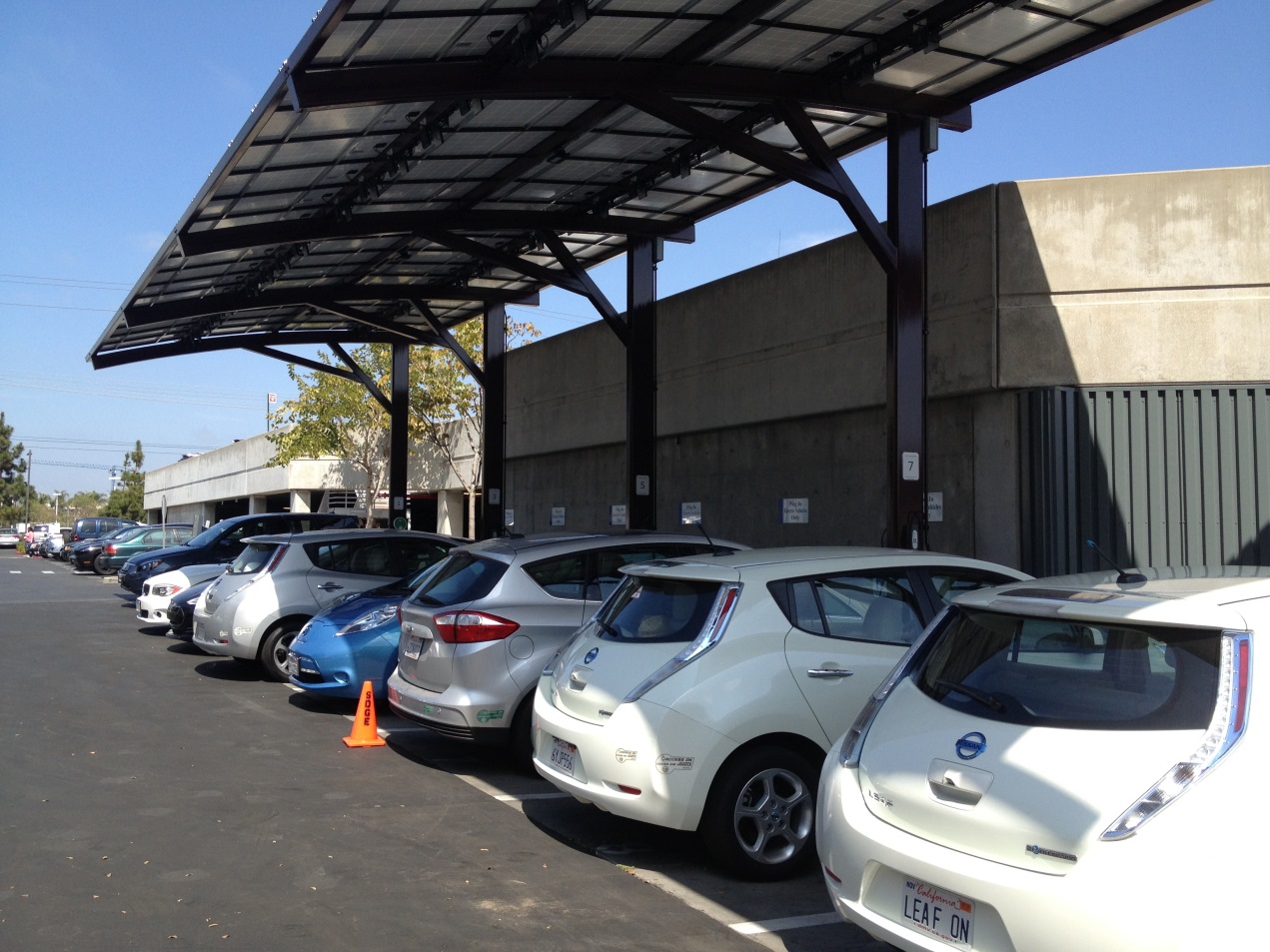Jan. 1, 2015
Using Solar Power to Supplement Workplace Charging
Installing plug-in electric vehicle (PEV) charging stations at the workplace demonstrates a commitment toward an efficient campus. With workplace charging, most employees plug in their PEVs during the day, when the sun is shining. Using solar power to supplement electricity from the grid can help employers further reduce their carbon footprint by off-setting the mid-day electricity consumption of PEV charging. According to a study by Oak Ridge National Laboratory, an area above a parking space can produce enough electricity in one year to offset the electricity required to drive a Nissan LEAF or similar vehicle approximately 10,000 miles.
Common Types of Solar Connected Charging Scenarios
Building-mounted solar panels are ideal for companies with buildings that already have existing solar installations and an interconnection agreement. In such an agreement, an electricity customer can sell excess solar-generated electricity back to the utility. Building-mounted solar panels can also be beneficial for employers with limited ground space. Samsung Electronics, located in urban Rancho Dominguez, California, has paired building-mounted solar panels with its charging stations. By using the sun's energy, the company was not only able to effectively meet employee charging demand, but also realized cost savings associated with using renewable energy.
Solar parking canopies require larger parking spaces and infrastructure investment, but have the added benefit of providing shaded and protected spaces for charging. Not parking under the sizzling sun during the summer keeps a PEV's interior temperatures lower, which allows the driver to use less energy for cooling when they return to the vehicle. This shading also helps prevent UV damage on both the interior and exterior of the vehicle. If the carport also covers spaces that are not specifically designated for charging, it can provide similar benefits to non-PEV drivers as well. This installation type is best for organizations with large campuses and many PEV-driving employees. At Ford's headquarters, near Dearborn, Michigan, a solar array covers 360 parking spaces and includes 14 PEV charging stations. This is one of the largest solar carports in the Midwest and produces more than 1 megawatt of electricity each year to recharge the vehicles and power the buildings.
Advantages of Using Solar Power to Supplement Workplace Charging
Workplace solar, coupled with charging, may allow employers to generate excess energy that can be sold back to utilities for use to power the grid or to offset other electrical loads, such as cooling. The extra electricity produced by solar can also help employers reduce the impact of "demand charges," which are premiums charged by some utilities for using large amounts of electricity during peak hours or exceeding certain thresholds. Battery integration, a feature in some solar-powered charging installations, can store surplus energy, adding capacity and flexibility. Battery integration can also help employers hedge against potential intermittencies in solar electricity supply. In case of overcast weather, batteries can serve as backup power for charging stations so they do not need to draw power from the grid.
Additional Factors to Consider
As with any business decision, employers considering the installation of solar have to weigh the benefits and costs. Important factors worth considering include:
- Geographic Location. The amount of solar radiation hitting a specific area determines how much electricity a panel will produce. While it is possible to generate electricity when the sun's rays are indirect, it may be more cost effective to set up solar powered charging stations where direct sunlight is abundant. To check your area's solar incidence, see the National Renewable Energy Laboratory's (NREL) NSRDB Data Viewer.
- Hardware & Installation Cost. Building-mounted solar panels and solar canopies add considerable cost to the procurement and installation of charging stations. However, tax incentives may be available at the federal, state, or municipal levels. Find information on incentives in your area by visiting DSIRE, the Database of State Incentives for Renewables & Efficiency.
- Utility Regulations. Policies that determine whether or not an employer can sell surplus solar-generated electricity back to the grid can differ from one utility to another. If this is something that your organization is interested in doing, contact your local utility to find out their policy.
For employers interested in pairing solar power with charging stations, see the SunShot Solar Energy Resource Center.
